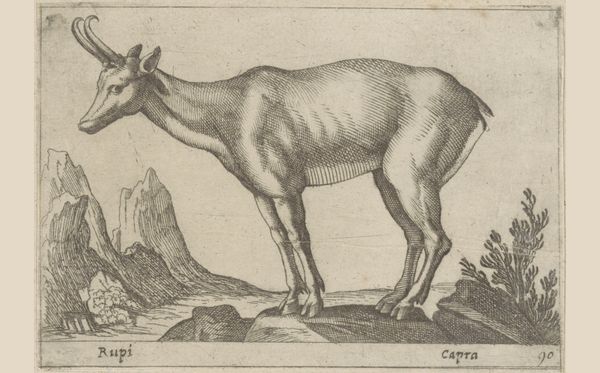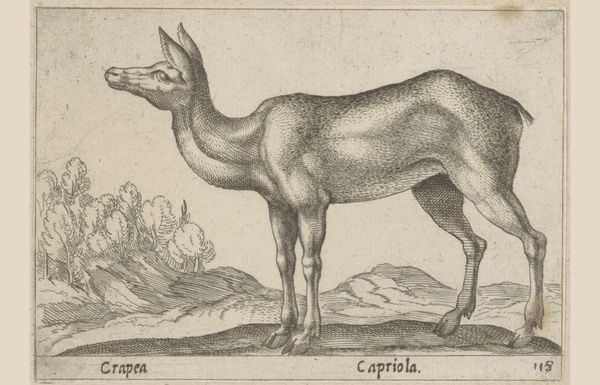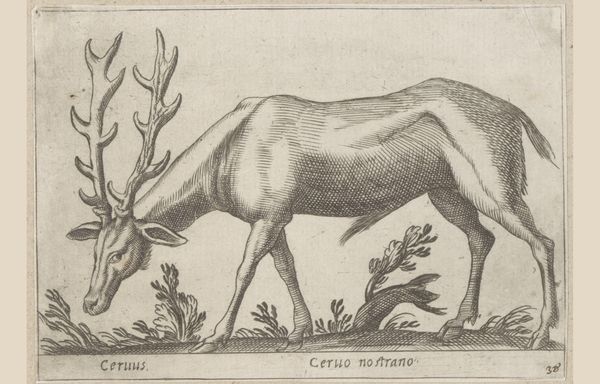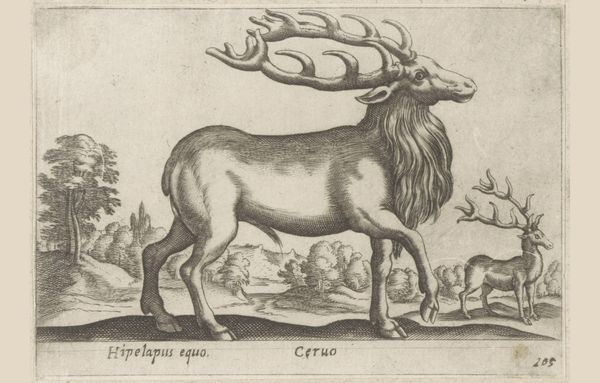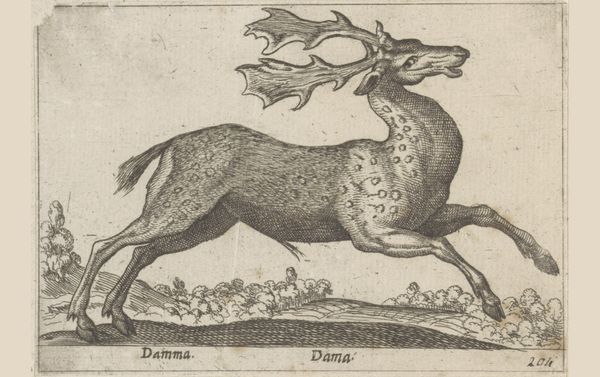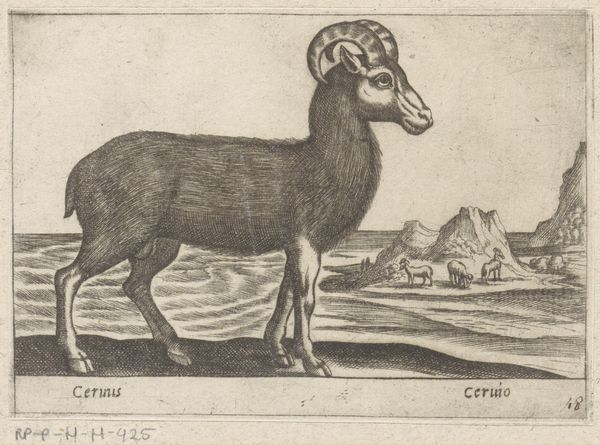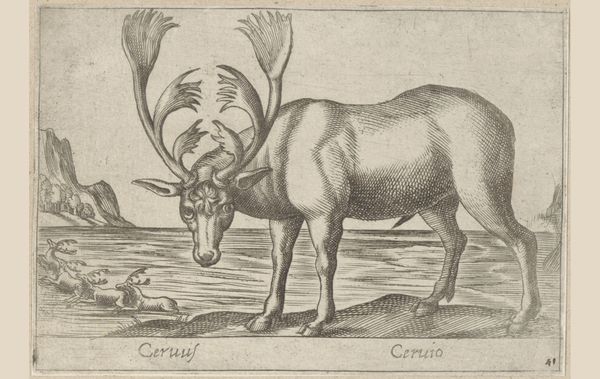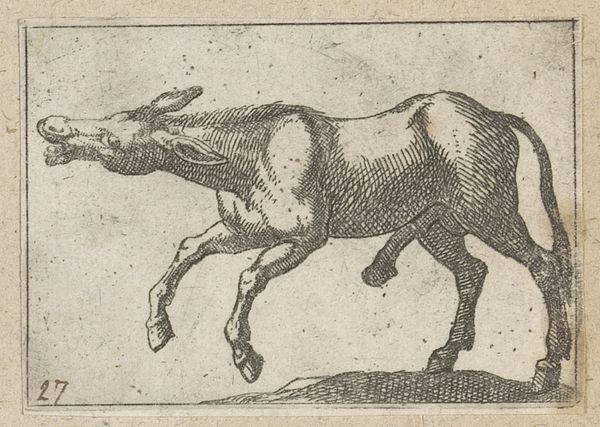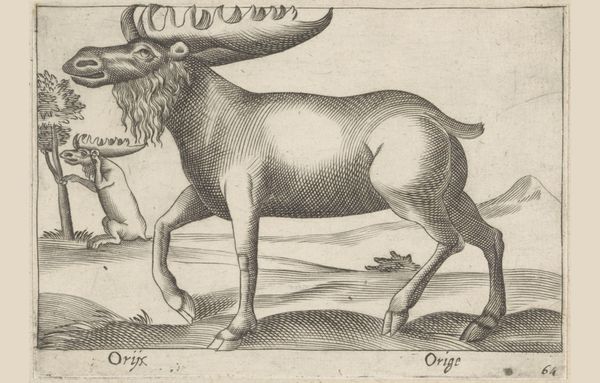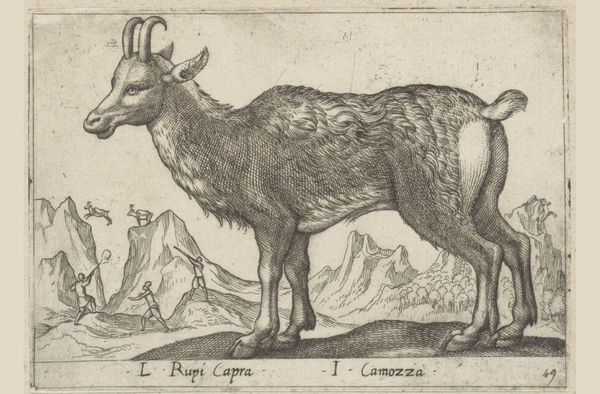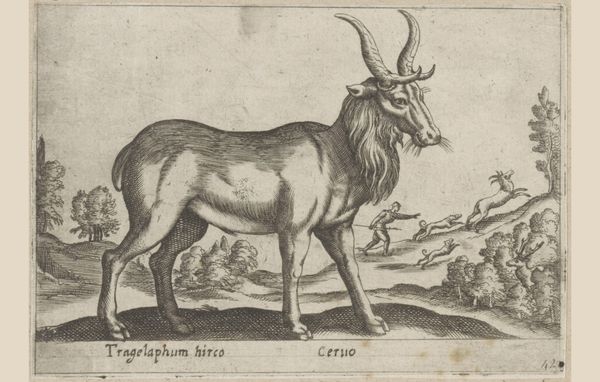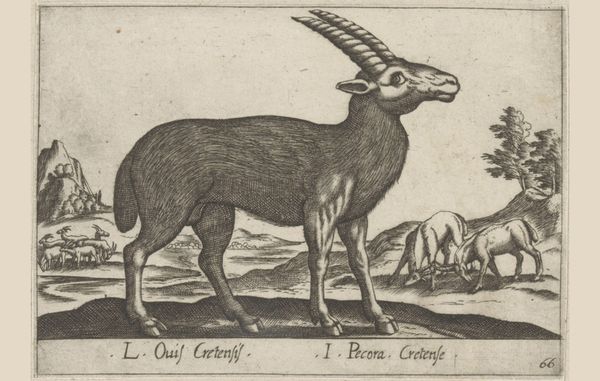
print, engraving
#
baroque
#
animal
# print
#
old engraving style
#
landscape
#
history-painting
#
engraving
Dimensions: height 95 mm, width 137 mm
Copyright: Rijks Museum: Open Domain
Curator: This is "Hinde," an engraving crafted by Antonio Tempesta, sometime before 1650. You can find it here at the Rijksmuseum. Editor: My initial impression is... awkward. It's this blend of serenity and slight distortion, almost like a dream where things are familiar, but just off. Curator: The "awkwardness" you perceive could stem from the fact that Tempesta, like many artists of his era, sometimes prioritized symbolic representation over strict anatomical accuracy. Editor: Symbols like? Curator: The deer or hinde, for instance, it is a multifaceted symbol. In classical times, it was linked to Diana, the huntress, embodying both grace and swiftness. Medieval Christian art associated it with piety and religious devotion, due to Psalms stating that, as the deer yearns for water, it desires the divine. The context changes its symbolic heft considerably. Editor: It does look like something escaped from a bestiary, doesn't it? Those tiny, meticulously drawn landscapes receding behind the almost comical bulk of this central deer...it’s like two worlds colliding on one plane. Curator: These types of prints often served didactic or ornamental purposes, weren't necessarily striving for photographic realism. They acted as source material. Notice the inscription, 'Cervus'. Its part scientific classification and part allegorical prompt. Editor: The 'old engraving style,' as the museum records note, definitely plays into this sense of antiquity. Those crisp lines, the hatched shading... it’s all a conscious nod to artistic tradition, yet simultaneously it kind of underscores how "unreal" this deer looks, almost like taxidermy. Curator: And in Baroque fashion, everything, including animals, become dramatic agents in a larger historical painting unfolding within human drama. This print is from an era obsessed with classifying the world, encoding morality lessons. The deer stands for far more than what meets the modern eye. Editor: Considering all of that really does enrich what at first I thought was just a quaint, strange, depiction. Now, I get a stronger feeling of it as a snapshot of a world trying to make sense of itself. Curator: Indeed. The artwork beckons viewers into a narrative woven from culture, faith, and visual language.
Comments
No comments
Be the first to comment and join the conversation on the ultimate creative platform.
